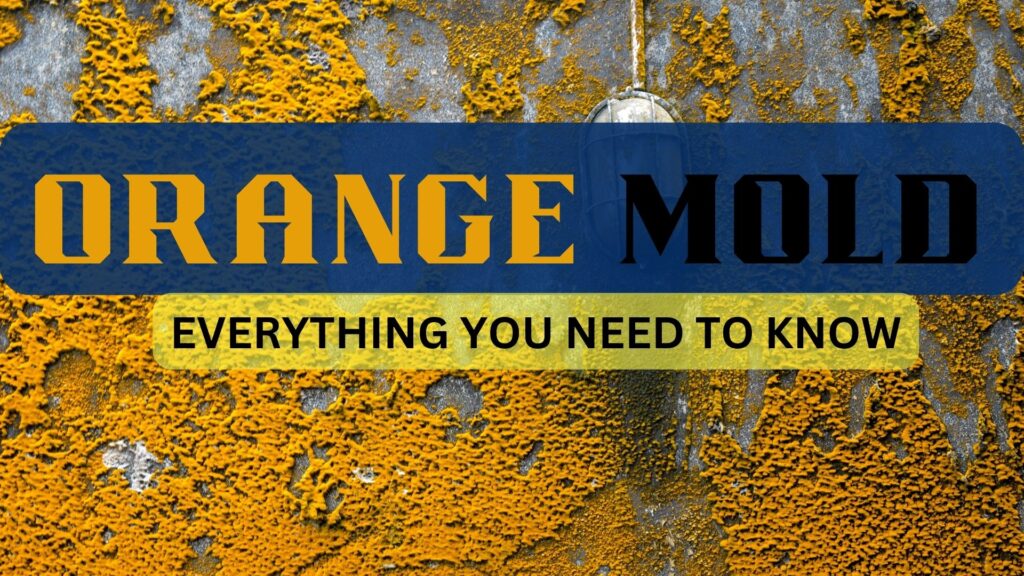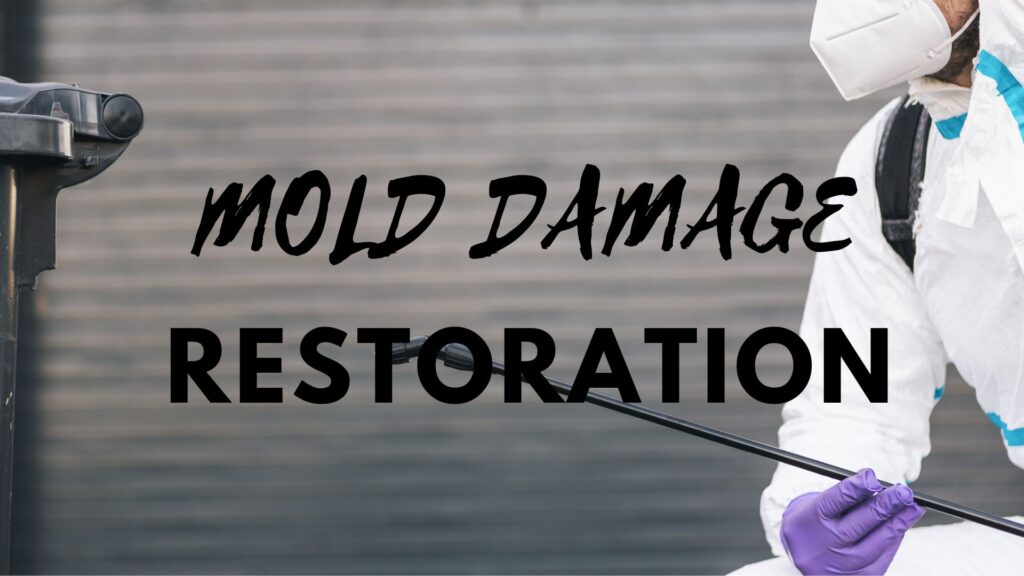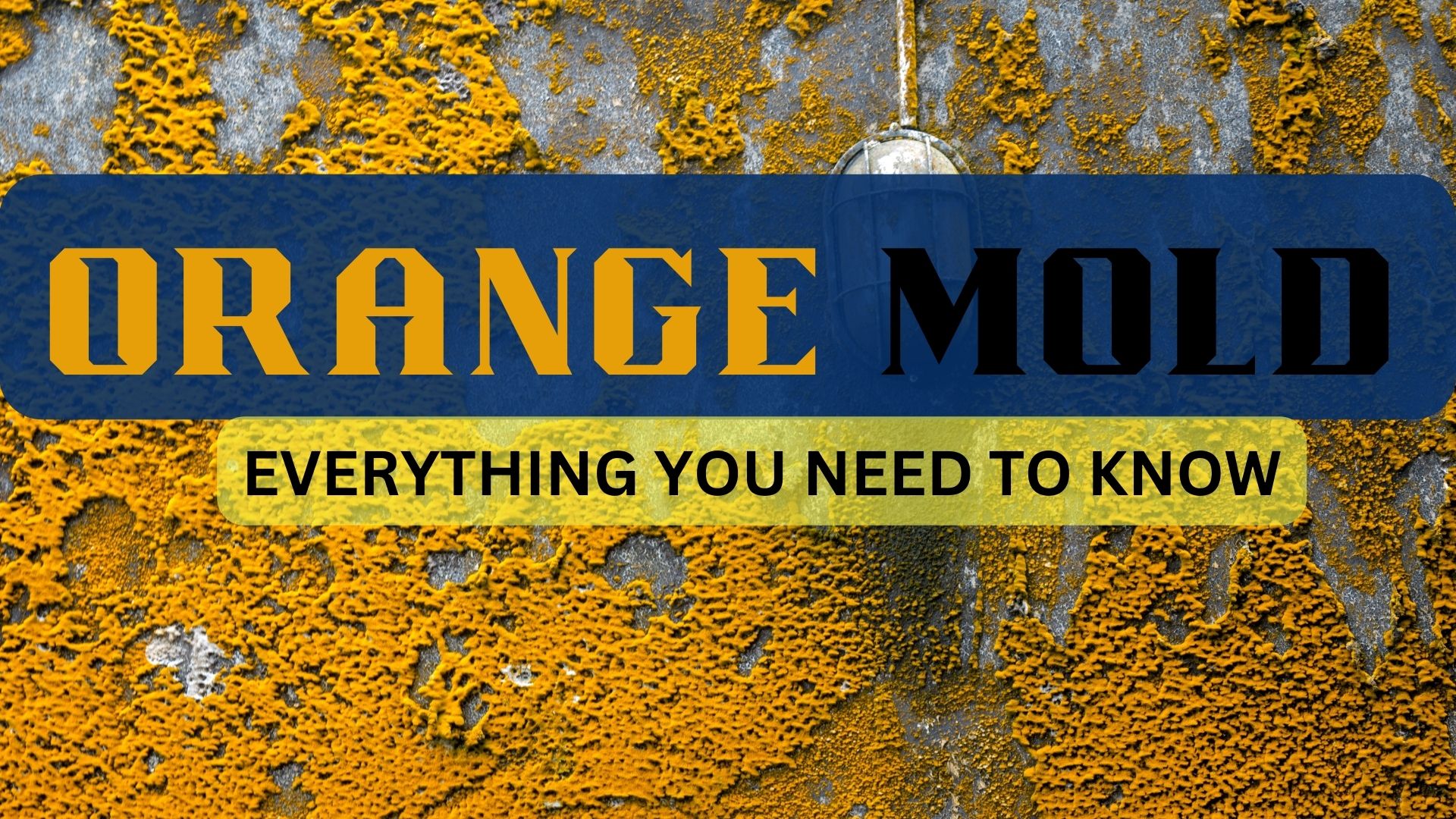Mold, a type of fungus, is a common issue in many households. While it typically manifests as black or green growth, there is a lesser-known variant called orange mold. This unique and captivating mold species, known scientifically as fuligo septica, stands out with its vibrant orange color.
In this comprehensive article, we will dig into everything you need to know about orange mold. This includes its types, growth patterns, health risks, and effective prevention methods.
Unveiling the Intriguing World of Orange Mold
*What are the Types?
Orange mold encompasses various species that exhibit similar characteristics and growth patterns. Some of the most common types of orange mold include:
Fuligo Septica: Also known as “orange slime mold” or “dog vomit mold,” the primary species associated with orange mold. It thrives on decaying organic matter, such as wood chips, mulch, and leaf debris.
Other Orange-Colored Fungi: Apart from fuligo septica, certain other fungi can develop an orange hue. This includes some species such as Aspergillus and Penicillium. These molds often grow on organic material, such as fruits, vegetables, and dairy products.
*About Its Growth and Spreading
Orange mold thrives in moist environments rich in organic matter and can be found both indoors and outdoors. Although indoor growth is more likely to occur in areas with high humidity levels or water damage. Here are some key factors contributing to the growth of orange mold:
- Moisture: Adequate moisture is crucial for orange mold to develop and spread. Leaking pipes, condensation, or flooding can create ideal conditions for its growth.
- Organic Matter: Orange mold feeds on decaying organic material. This can include plant debris, wood, paper, fabrics, and even food items like fruits and dairy products.
- Poor Ventilation: Insufficient air circulation and lack of ventilation promote the accumulation of moisture, creating an environment conducive to mold growth.
*What are the Common Locations for This Type of Mold?
Orange mold can be found in various areas both indoors and outdoors. Understanding the common locations where orange mold tends to thrive will help you identify potential problem areas and take appropriate preventive measures. Here are some typical places where you may encounter this type of mold:
- Organic Material: Orange mold favors organic matter for its growth. Outdoor locations such as wood chips, mulch beds, and leaf debris provide an ideal breeding ground. Indoors, it can grow on decaying wood, paper, fabrics, and even food items.
- Bathroom and Kitchen: Bathrooms and kitchens are particularly susceptible to mold growth due to the presence of moisture and organic material. This orange-colored mold can develop in damp corners, around faucets, under sinks, and on tiles or grout lines.
- Basements and Crawl Spaces: Poor ventilation and potential water leaks make basements and crawl spaces prone to mold growth. Orange mold may appear on walls, floors, or stored items in these areas, especially if there is a history of water damage or high humidity.
- Attics and Roof Spaces: Improper insulation or ventilation in attics and roof spaces can lead to moisture buildup and subsequent mold growth. Orange mold may develop on wooden structures, insulation materials, or stored items in these areas.
- Air Conditioning and HVAC Systems: HVAC systems, including air conditioning units, ductwork, and filters, can become breeding grounds for mold if not properly maintained. Orange mold may grow in damp or poorly insulated components, leading to the circulation of mold spores throughout the building.
- Window Sills and Frames: Condensation can occur on window sills and frames, creating a moist environment conducive to mold growth. This mold may appear on the edges or corners of windows, especially in rooms with high humidity levels.
- Furniture and Upholstery: Moisture from spills or inadequate drying can cause mold growth on furniture, mattresses, cushions, and upholstery. If these items are made of organic materials, such as cotton or leather, they can provide a food source for orange mold.
- Carpet and Flooring: Moisture from water leaks or spills can seep into carpets and flooring, leading to mold growth. Orange-colored mold may develop underneath carpets, in damp basements with carpeted floors, or on wooden flooring in contact with water.
It’s important to note that orange mold can grow in other locations where organic material and moisture are present. Regular inspections, moisture control, and prompt remediation of any water damage or leaks are crucial to preventing the growth of orange mold in your home.
Health Risks Associated with Orange Mold
While mold of any type can pose health risks, it is important to understand the potential implications specific to orange mold. Here are some health concerns associated with exposure to orange mold:
- Respiratory Issues: Orange mold releases tiny spores into the air. When inhaled, can trigger respiratory problems. This is true, particularly in individuals with pre-existing respiratory conditions or weakened immune systems.
- Allergic Reactions: Some people may develop allergic reactions to orange mold. This can lead to symptoms such as coughing, sneezing, itchy eyes, and skin rashes.
- Weakened Immune System: Individuals who are undergoing chemotherapy or with HIV/AIDS, are more susceptible to mold-related infections and complications.
- Toxicity: While rare, certain molds, including some orange-colored species, can produce mycotoxins. Prolonged exposure to these toxins can result in various health problems, ranging from neurological issues to organ damage.
Is Orange Mold Dangerous?
Orange mold, like other molds, can potentially pose health risks, particularly when it comes to individuals with certain sensitivities or pre-existing health conditions. While not all orange mold species are toxic, it is essential to approach any mold growth with caution. Here’s what you need to know about the potential dangers associated with orange mold:
- Respiratory Issues: Inhalation of mold spores, including those from orange mold, can cause respiratory problems. Individuals with allergies, asthma, or other respiratory conditions may experience coughing, wheezing, nasal congestion, or shortness of breath when exposed to mold spores.
- Allergic Reactions: Some individuals may develop allergic reactions to orange mold. Symptoms can include sneezing, itching, watery eyes, skin rashes, and nasal congestion. If you notice these symptoms after being in contact with orange mold, it’s advisable to consult a healthcare professional.
- Weakened Immune System: Those undergoing chemotherapy, organ transplant recipients, or individuals with HIV/AIDS, are more susceptible to mold-related infections and complications. Orange mold can potentially cause severe respiratory or systemic infections in these individuals.
- Toxicity: While most orange mold species are not known to produce mycotoxins (toxic substances produced by certain molds), it is important to be cautious.
Some molds, including certain orange-colored species, can produce mycotoxins under specific conditions. Prolonged exposure to these mycotoxins can lead to a range of health problems, including neurological symptoms, gastrointestinal issues, and organ damage.
- Individual Sensitivities: Each person’s response to mold exposure can vary. Some individuals may be more sensitive or susceptible to the health effects of orange mold than others. Factors such as overall health, genetics, and length of exposure can influence an individual’s reaction to mold.
It’s worth noting that the majority of healthy individuals may not experience severe health issues from short-term exposure to orange mold. However, it is still crucial to address any mold growth promptly and take necessary precautions to minimize potential health risks. If you have concerns about orange mold in your home or experience persistent health symptoms, it is advisable to consult a healthcare professional or seek guidance from a mold remediation specialist.
Removing Orange Mold Safely
If you discover this kind of mold in your home, it is crucial to handle its removal with care to minimize health risks. Here are the steps to safely remove orange mold:
Protective Gear: Before starting the cleaning process, ensure your safety by wearing protective gear, including gloves, goggles, and an N95 respirator mask to prevent inhaling mold spores.
Containment: Isolate the affected area to prevent the spread of mold spores to other parts of your home. Seal off the area using plastic sheets and duct tape.
Cleaning Solutions: Use a mixture of mild detergent or a commercial mold cleaner diluted in water to clean the affected surfaces. Scrub gently to remove visible mold growth.
Drying and Disposal: After cleaning, thoroughly dry the area using fans and dehumidifiers to eliminate moisture. Dispose of any contaminated materials, such as porous items that cannot be effectively cleaned, in sealed plastic bags.
Professional Assistance: For extensive mold infestations or if you are unsure about handling the removal process, it is advisable to seek professional help from certified mold remediation experts.
Preventing Orange Mold Growth
Prevention is key when it comes to managing mold growth. By adopting proactive measures, you can significantly reduce the chances of orange mold infestation in your home. Below are some preventive steps that you can consider:
- Moisture Control: Regularly inspect your home for plumbing leaks, roof damage, or any areas prone to water accumulation. Repair leaks promptly and ensure proper ventilation in areas like bathrooms, kitchens, and basements.
- Reduce Humidity: Use dehumidifiers in areas with high humidity levels to maintain moisture levels below 50%. Empty and clean the dehumidifier regularly to prevent mold growth within the device.
- Proper Ventilation: Ensure adequate airflow and ventilation by using exhaust fans in bathrooms and kitchens. Open windows when weather permits to allow fresh air circulation.
- Regular Cleaning: Regularly clean and inspect areas prone to mold growth, such as basements, crawl spaces, and attics. Pay attention to dark and damp corners, as mold can develop unnoticed.
- Dry Wet Items: Promptly dry any wet or damp items, including carpets, clothing, and furniture, to prevent mold from taking hold.
Hire a Trusted Water Damage and Mold Remediation Services Near You
Orange mold, represented predominantly by the species fuligo septica, presents a fascinating aspect of the diverse mold kingdom. While its vibrant color may catch your eye, it is essential to understand the potential health risks associated with its growth. By being vigilant, implementing effective prevention strategies, and promptly addressing any mold issues, you can ensure a healthier living environment for you and your family. Remember, if faced with a significant mold infestation, it is advisable to consult professional mold remediation experts like Superior Restoration and Shamrock Cleaning for safe and thorough removal.
Please contact our round-the-clock local office Water Damage Rancho Cucamonga, today!






